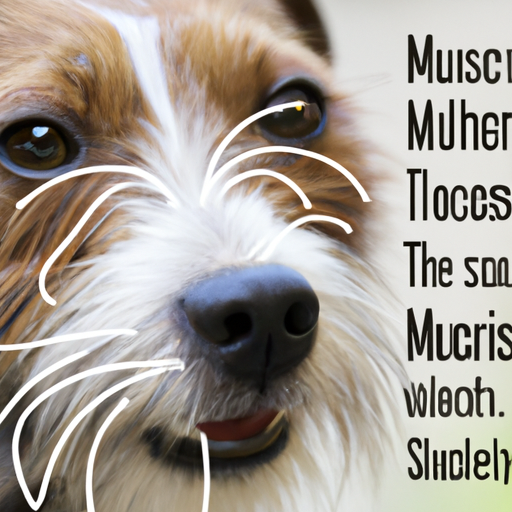“`markdown
What Do Dogs Whiskers Do?
Introduction
Hello, dedicated caregiver of your four-legged friend! You’ve undoubtedly noticed those long, stiff hairs protruding from your dog’s muzzle, cheek area, and above their eyes. They’re not just for making your pup look extra adorable; they serve a function that’s vital to your dog’s navigation and communication. Let’s dive into the world of dog whiskers!
1. Whiskers as Sensory Tools
Your dog’s whiskers, or “vibrissae” as they’re scientifically called, are essentially high-powered feelers. They’re rooted much deeper in your dog’s skin than their regular hair and are connected to a highly sensitive muscular and nervous system.
- When the whiskers touch something or even just experience a shift in air currents, they vibrate.
- These vibrations then stimulate the nerves in the dog’s body, allowing them to “sense” their surroundings even without directly touching or seeing them.
2. Whiskers for Spatial Awareness
Imagine being able to “see” an obstacle before actually seeing it. That’s what whiskers do for your dog.
- Whiskers on the muzzle and above the eyes can detect changes in the environment, helping dogs avoid threats.
- Whiskers beneath the chin and on the back of the legs can help dogs gauge their body’s relation to the ground.
| Whisker Location | Function |
|---|---|
| Muzzle | Detect changes ahead (like obstacles) |
| Above the Eyes | Protect the eyes from nearby threats |
| Chin and Legs | Gauge relation to the ground and objects |
3. Whiskers for Emotional Communication
Whiskers also offer insight into a dog’s emotional state. When relaxed, the whiskers will be held loosely to the side. If the whiskers are pulled tightly back across the face, it could indicate that the dog is feeling aggressive or defensive.
4. The Importance of Whiskers in Dogs
You might think those long hairs on your dog’s face need a trim, but resist the urge! A dog’s whiskers are vital to their well-being. They help them navigate the world safely and communicate their feelings more effectively.
Frequently Asked Questions (FAQs)
Q: Should I ever trim my dog’s whiskers?
A: No, whiskers serve important sensory and communication functions for dogs. Trimming them can cause discomfort and disorientation.
Q: Can a dog still function without its whiskers?
A: While a dog can still function without its whiskers, they may feel disoriented or scared without their tactile “guides.”
Q: Do whiskers grow back if cut or damaged?
A: Yes, whiskers do grow back over time if they are accidentally cut or damaged.
Q: Are a dog’s whiskers sensitive?
A: Yes, whiskers are highly sensitive to touch and vibrations, which helps dogs sense their surroundings.
Join us next week as we explore more fascinating facets of our furry friends. Until then, keep nurturing your pups with the love and care they deserve!
“`



